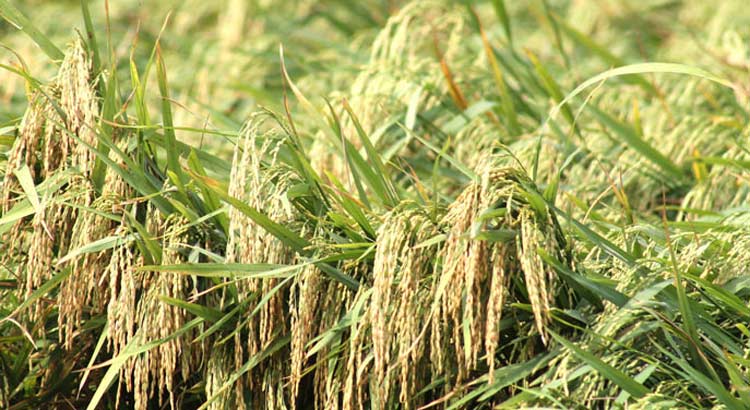
Dr. M. A. Sobhan
Diabetes is a disorder caused by insufficient or lack of production of insulin (a hormone) by the pancreas (a gland of the abdomen). Insulin is responsible for absorbing glucose (a simple sugar) into the blood stream, where it is available for body cells to use for growth and energy.
When people eat, the pancreas automatically produces the correct amount of insulin to absorb the glucose. In people with diabetes, the pancreas either produces little or no insulin or the body’s cells do not respond to the insulin that is produced. Glucose builds up in the blood, over-flows into the urine and passes out of the body, with the result that the body loses its main source of energy.
Diabetes in Bangladesh
There were 7.1 million cases of diabetes in Bangladesh in 2015 (www.idf.org/membership/…/ Bangladesh). However, the number of people with diabetes is extrapolated to rise to more than16million by 2020 (bmcpublichealth.biomedcentral.com/articles/10…/1471-2458-13-1217)
Causes of diabetes
There are many factors that lead to the risks of suffering from diabetes. These include stress, obesity and insufficient physical exercise. Controlling diabetes efficiently means controlling sugar within the body. Healthy diets thus play an important role in lowering the risk of diabetes.
Following the introduction and extension of high yielding rice varieties, Bangladesh has recently made a remarkable increase in the production of rice. However, this increased production is spear headed by varieties leading to significant rise in blood sugar level of the people. As an example in 2008, 29% of total rice cropped area was dedicated to the production of two rice varieties (BRRI Dhan 28, BRRI Dhan 29,) with high glycemic values. Rice varieties that do not lead to high blood sugar levels, on the other hand, were limited to only 4% of total rice cropped area. Bangladesh produces around 35 million tons of rice of which 56% comes from BRRI Dhan 28 and BRRI Dhan 29 (The daily Observer, 18 January 2016).
Glycemic index:
The Glycemic index or G1 is a measure of the effects of carbohydrate on blood glucose level. It is a quantitative indicator of the ability to raise blood glucose. Foods are ranked based on how they compare to a reference food like glucose.
The glycemic index is divided into three general categories:
High glycemic index foods (GI 70+) that cause a rapid rise in blood glucose level;
Intermediate glycemic index food (GI 56-69) and Low glycemic index foods (GI 55 or less), that cause a slower rise in blood glucose.
Low GI foods (55 or less)
Wheat, oat, barley, brown rice ,yam
sweet potato, maize, common bean, nut, carrot, peas, legumes, pulses and groundnut,
most of the fruits, non- starchy vegetables and carrot. The preferred fruits include apple, orange, tomato, dates, grapes, peach and pear.
Medium GI foods (56-69)
Soft drink, sweet corn, raisin, ripe banana, honey, cassava, bashmoti rice .
High GI ( 70 or more)
Corn flakes, puffed rice, white rice,
rice noodle, cheese,
potato, pumpkin,
rice cakes, popcorn, white wheat bread,
melons, pineapple and grape fruit.
Factors affecting GI of a food:
Fat and fiber tend to lower the GI of food. In general, the more cooked or processed a food, the high the GI. The more ripe a fruit or vegetables is, the higher the GI. Juice has a higher GI than whole fruit. Mashed potato has a higher GI than a whole baked potato. White rice has a higher GI than brown rice.
Glycemic index of rice verities:
There is a considerable variability in GI of rice varieties. GI of some common rice verities of Bangladesh is present in the following table.
Table -1: Glycemic index of selected rice varieties
| Sl no | Variety | Glycemic Index | |
| Parboiled | Un- Parboiled | ||
| 1. | BR I | 54.7 | 62.4 |
| 2. | BR I1 | 61.5 | 64.8 |
| 3. | BR I6 | 49.8 | 52.3 |
| 4. | BR26 | 68.5 | 71.4 |
| 5. | BRRI Dhan 28 | 65.9 | 70.5 |
| 6. | BRRI Dhan 29 | 74.2 | 76.3 |
| 7. | BRRI Dhan 30 | 59.6 | 62.4 |
| 8. | BRRI Dhan 40 | 56.2 | 59.5 |
| 9. | PAJAM | 54.2 | 58.6 |
| 10. | CHINIGURA | – | 70.2 |
Source: www.fpcsp.org/agridrupal/sites/defailt/files/Final Report-cf-6
It is observed in the above table that the blood glucose response of dietary carbohydrate ranged from 49.8-74.2 in parboiled rice varieties and from 52.3-76.3 in un-parboiled varieties.
Only two varieties (BR 16 and PAJAM) are the low GI varieties (55 and below).
Most of the varieties are within medium GI group (56-69). High GI value (70 and above) are BRRI Dhan 29, CHINIGURA, BR26 and BRRI Dhan 28.


Conclusion
There are many factors which can play with our blood glucose levels. Regular monitoring of these and acting accordingly can help us controlling our blood glucose levels. Such decisions can help delay or prevent diabetes complications including heart attack, kidney failure, blindness and such other brow beats.